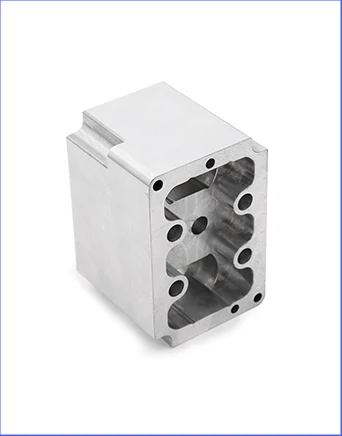Time to read: 6 min

Understanding the Challenge of Sharp Inside Corners
The pursuit of precision in CNC machining often encounters obstacles when attempting to create sharp inside corners. The inherent limitations of cutting tool shapes make this a difficult task, but with the right approach, it can be achieved.
Reasons to Avoid Sharp Corners in CNC Machining
- Internal vs. External Sharp Corners: Different impacts on machining processes.
- Manufacturing Challenges: Complexity and reduced tool access.
- Tool Geometry: The role of tool design in addressing corner-related challenges.
- Reduced Efficiency: The trade-off between sharpness and production speed.
- Chip Recutting and Tool Engagement: Impact on surface finish and part quality.
- Positioning and Workholding: Challenges in securing parts with sharp corners.
- Increased Costs: The financial implications of complex internal features.
Making Sharp Corners Possible
Despite the difficulties, there are scenarios where sharp corners are essential:
- Precision: Industries like automotive, aerospace, and medical often require sharp corners for functionality.
- Design Intent: Aesthetics and market demands may dictate the inclusion of sharp corners.
- Functional Benefits: Assembling parts and tool and die manufacturing may necessitate sharp corners.
Designing for CNC: Optimizing Sharp Corners
- Early Design Considerations: Integrating CNC machining considerations from the outset.
- Tool Geometry: The selection of tools based on corner radii and length.
- Material Properties: The influence of material hardness, ductility, and stability on machining sharp corners.
How to Machine Sharp Inside Corners
- Using a Ball-Nose End Mill: Suitable for creating small inside corner radii.
- Using a Corner Relief End Mill: Designed for precise internal elements and reducing chipping risks.
- Using a Grinding Wheel: Requires skilled operation for parts with tight tolerances.
- Using EDM: Die-sink EDM and wire EDM for precise sharp corners.
- CNC Routing: Versatile for 2D work but may have limitations for extremely sharp corners.
- Using Laser Cutting: Suitable for 2D designs with thin plates but not perfect for square corners.
Additional Tips for Improved Machining
- Use a Sharp Cutting Tool: Ensures cleaner cuts and precise corners.
- Use a Cutting Fluid: Increases efficiency and prevents heat buildup.
- Make Multiple Passes: Improves accuracy and surface finish.
Sharp Corner Alternatives
- T-bone Fillets: An easy method for proper mating of parts without aesthetic appeal.
- Dog Bone Fillets: Offer better aesthetics and are suitable for complex CNC designs.
Conclusion
Machining sharp corners in CNC is a delicate process that requires expertise and precision. By understanding the challenges and employing the strategies outlined in this article, manufacturers can achieve the desired sharpness while maintaining efficiency and quality.
For projects that demand sharp inside corners, consider partnering with a reputable CNC machining service provider like Unofactory. Our experienced engineers and state-of-the-art facilities ensure precision and quality, delivering customized components that meet your exact specifications.




